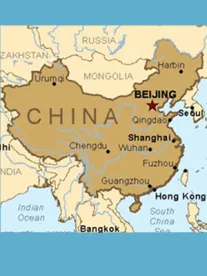The United States and China recently concluded two days of high-level talks as part of the sixth U.S.-China Strategic and Economic Dialogue (“S&ED” or the “Dialogue”), which took place in Beijing from July 9-10. A U.S.-China Joint Fact Sheet and other communications from the Dialogue indicate that certain commitments were reached to prioritize work on a variety of issues in the bilateral relationship, although no significant breakthroughs were achieved.
In parallel with the S&ED, China continues to move forward with pilot economic reforms in the Shanghai Free Trade Zone (“FTZ”), and U.S. and Chinese negotiators continue work on a U.S.-China Bilateral Investment Treaty (“BIT”). In particular, China recently issued a somewhat shortened “negative list” that reduced to a certain extent the number of restrictions applicable to investments in the FTZ, and at the S&ED, both sides indicated that they will initiate BIT negative list negotiations by early next year. As explained further below, at a time when progress in some areas seems stymied, the U.S.-China BIT is shaping up to be a (and perhaps the) key mechanism for U.S. companies to seek improved market access and relief from discriminatory or burdensome barriers to trade, investment, and other business activities in China.
U.S.-China Strategic and Economic Dialogue: Background and Outcomes of the Recent Dialogue
The S&ED was established by President Obama and Chinese President Hu Jintao in April 2009. It includes an annual meeting, alternating between Washington and Beijing, and consists of both a “Strategic Track” (led by Secretary of State John Kerry and State Councilor Yang Jiechi) and an “Economic Track” (led by Treasury Secretary Jack Lew and Vice Premier Wang Yang). The lead representatives are joined by a high-level delegation of Cabinet members, ministers, agency heads and senior officials from both countries, including on the U.S. side Penny Pritzker, Secretary of Commerce; Ernest Moniz, Secretary of Energy; Mike Froman, U.S. Trade Representative; and Janet Yellen, Chair, Federal Reserve.
The economic dialogue focused on macroeconomic policy and structural reforms; deepening trade and investment cooperation; financial industry reforms; and opening of markets. In particular, according to a closing statement by Vice Premier Wang, the two sides reached more than 90 outcomes. The economic-focused results of greatest relevance to foreign investors in China, as described in the U.S.-China Joint Fact Sheet, include the following:
-
China committing that “economic entities under all forms of ownership . . . are able to compete on a level playing field.”
-
The U.S. and China underscoring the importance of fostering an “open, transparent, and non-discriminatory environment for trade and investment.”
-
Both sides affirming their commitment “to intensify . . . negotiations toward a BIT with high standards, including non-discrimination, fairness, openness, and transparency, . . . to narrow differences and to reach agreement on core issues and major articles of the treaty text by the end of 2014, and . . . to initiate the ‘negative list’ negotiation early in 2015 based on each other’s ‘negative list’ offers.”
-
China committing that “its three Anti-Monopoly Enforcement Agencies (AMEAs) are to provide to any party under investigation information about the AMEA’s competition concerns with the conduct or transaction, as well as effective opportunity for the party to present evidence in its defense.”
-
China committing “to follow the guidance provided at the Third Plenum of the 18th CPC Central Committee, which is to promote the orderly opening-up of the finance, education, cultural, medical sectors, and other service areas, and to remove foreign investment access restrictions in child and old-age care, architectural design, accounting and auditing, commerce and logistics, electronic commerce, and other such service sectors, including accelerating the revision of the Catalogue Guiding Foreign Investment in Industries to further open up to foreign investment.”
-
Both sides committing, with respect to the Information Technology Agreement, to “continue the discussion within the next few weeks, to create conditions to restart plurilateral negotiations.”
-
China committing to “vigorously investigate and prosecute trade secret theft cases.”
Given the persistent systemic challenges associated with achieving concrete progress in each of these areas, the foreign business community will be watching with great interest to see whether or how these commitments will be implemented.
Shanghai Free Trade Zone: Removal of Investment Restrictions
Last year, China launched a pilot FTZ in Shanghai, intended as a testing ground for economic and other reforms in China. Unlike foreign investment into other areas of China, which is governed by a Catalogue that classifies investments in specific sectors as encouraged, restricted, or prohibited, and generally includes restrictions on investments in a wide variety of industries, the Shanghai FTZ operates according to a “negative list” approach. Under this approach, foreign investment in permitted in all sectors except as enumerated on the negative list.
Last week, China issued a revised negative list for the FTZ. For a comparison with the previous (2013) list. An accompanying statement by the Shanghai municipal government claimed that the new list was “17.4%” less restrictive than the previous list, but the loosening has not extended to sectors of major interest to foreign investors. This rather minimal loosening of restrictions has been greeted generally by U.S. officials, including Treasury Secretary Lew, with disappointment. In any event, China’s progress in implementing reforms in the Shanghai FTZ is an important ongoing indicator of prospects for achieving other reform objectives announced by the new leadership, and bears close monitoring.
U.S.-China BIT Negotiations: Seeking to Influence China’s Negative List
The most concrete outcome of this year’s S&ED is the commitment by both sides to reach agreement on the main body of the BIT text by the end of 2014 and to commence negative list negotiations by early next year. Indeed, given the broad scope of BITs negotiated by the United States, the U.S.-China BIT negotiations present the most important opportunity for U.S. industry to address market access and other trade and investment barriers in China since China’s accession to the WTO in 2001.
The U.S. and China have been negotiating the BIT since 2008. However, a significant milestone was achieved at last year’s S&ED, when China agreed that the BIT could include provisions granting national treatment to foreign investors during the “pre-establishment” stage. This would mean that foreign investors would be allowed to make new investments on the same terms and conditions available to domestic investors; any exceptions to this general rule would need to be specifically indicated in a negative list. As a result of this agreement by the Chinese side, removal of market access barriers for foreign investors was now clearly within the scope of the negotiations.
For U.S. companies seeking to enter the Chinese market, especially in industries that historically have been prohibited or heavily restricted for foreign investment, the remainder of this year is a critical time to engage with U.S. and Chinese government officials. Companies should use this time before China releases its negative list to apprise U.S. and Chinese policymakers of the companies’ priority interests. In particular, companies will want to specify the existing Chinese laws, regulations, policies and practices that impede the establishment of new investments or the operations of investments once established, and propose text to eliminate the impediments. China has signaled a willingness to open up the financial services, healthcare/medical, accounting, e-commerce, cultural and other service sectors, and U.S. negotiators will be looking to companies, trade associations and other stakeholders to identify the market access and other barriers that the U.S. Government can communicate to their Chinese counterparts, ideally for inclusion in China’s opening negative list offer.








 />i
/>i

